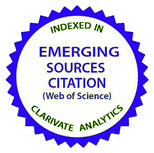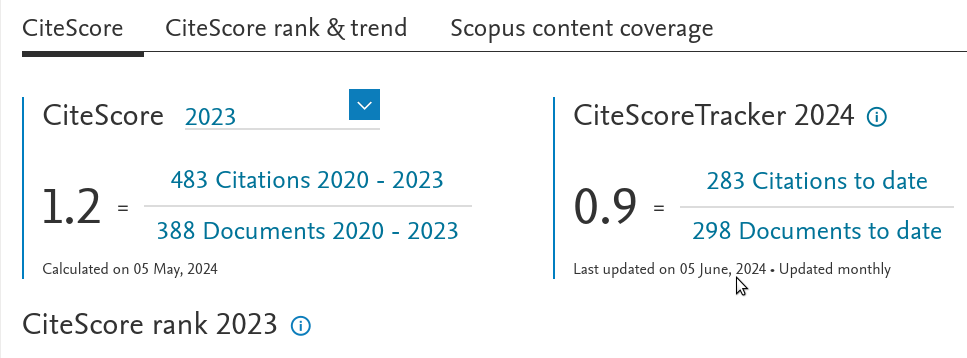Збудження ядер електронним переходом
DOI:
https://doi.org/10.15407/ujpe58.07.0618Ключові слова:
nuclear isomers, Hf, NEET, induced nuclear decay, x-raysАнотація
На основi строгої теорiї зiткнень розвинуто теорiю збудження ядер електронним переходом (NEET), iндукованим рентгенiвськими променями. Розглянуто всi стадiї процесу, включаючи утворення вакансiї у внутрiшнiй електроннiй оболонцi, ї ї розпад, що приводить до збудження ядра, та
подальше заповнення вакансiї на вищому рiвнi разом iз разрядкою ядра. Розраховано перерiзи для NEET та фотопоглинання рентгенiвських променiв поблизу краю поглинання. Результати узгоджуються з даними Кiшiмото та iнших для NEET на 197Au. Крiм того, ми обговорюємо NEET, як
механiзм тригерування 31-рiчного iзомеру 178Hfm2 через промiжний рiвень. Показано, що 2% прискорення розпаду цього iзомеру, яке спостерiгалося Коллiнсом та iн., реально, якщо ядро набуває в промiжному станi неаксiальної форми та iснує ще додаткова обертальна смуга з рiвнем 13^-.
Посилання
<li> M. Morita, Progr. Theor. Phys. 49, 1574 (1973).
<a href="https://doi.org/10.1143/PTP.49.1574">https://doi.org/10.1143/PTP.49.1574</a>
</li>
<li> S. Kishimoto, Y. Yoda, Y. Kobayashi et al., Phys. Rev. C 74, 031301(R) (2006).
</li>
<li> K. Otozai, R. Arakawa, and T. Saito, Nucl. Phys. A 297, 97 (1978).
<a href="https://doi.org/10.1016/0375-9474(78)90200-2">https://doi.org/10.1016/0375-9474(78)90200-2</a>
</li>
<li> A. Shinohara, T. Saito, M. Shoi et al., Nucl. Phys. A 472, 151 (1987).
<a href="https://doi.org/10.1016/0375-9474(87)90225-9">https://doi.org/10.1016/0375-9474(87)90225-9</a>
</li>
<li> L. Lakosi, N.C. Tam, and I. Pavliczek, Phys. Rev. C 52, 1510 (1995).
<a href="https://doi.org/10.1103/PhysRevC.52.1510">https://doi.org/10.1103/PhysRevC.52.1510</a>
</li>
<li> I. Ahmad, R.W. Dunford, H. Esbensen et al., Phys. Rev. C 61, 051304 (2000).
<a href="https://doi.org/10.1103/PhysRevC.61.051304">https://doi.org/10.1103/PhysRevC.61.051304</a>
</li>
<li> T. Saito, A. Shiohara, and K. Otozai, Phys. Lett. B 92, 293 (1980).
<a href="https://doi.org/10.1016/0370-2693(80)90267-1">https://doi.org/10.1016/0370-2693(80)90267-1</a>
</li>
<li> Z. Chummei, Nucl. Data Sheets 62, 433 (1991).
<a href="https://doi.org/10.1016/0090-3752(91)80018-2">https://doi.org/10.1016/0090-3752(91)80018-2</a>
</li>
<li> V. Kirischuk, A. Savrasov, N. Strilchuk, and V. Zheltonozhsky, EPL 97, 32001 (2012).
<a href="https://doi.org/10.1209/0295-5075/97/32001">https://doi.org/10.1209/0295-5075/97/32001</a>
</li>
<li> E.V. Tkalya, Nucl. Phys. A 539, 209 (1992).
<a href="https://doi.org/10.1016/0375-9474(92)90267-N">https://doi.org/10.1016/0375-9474(92)90267-N</a>
</li>
<li> Y. Ho et al., Phys. Rev. C 48, 2277 (1993).
<a href="https://doi.org/10.1103/PhysRevC.48.2277">https://doi.org/10.1103/PhysRevC.48.2277</a>
</li>
<li> M.R. Harston, Nucl. Phys. A 690, 447 (2001).
<a href="https://doi.org/10.1016/S0375-9474(01)00358-X">https://doi.org/10.1016/S0375-9474(01)00358-X</a>
</li>
<li> E.V. Tkalya, Phys. Rev. A 75, 022509 (2007).
<a href="https://doi.org/10.1103/PhysRevA.75.022509">https://doi.org/10.1103/PhysRevA.75.022509</a>
</li>
<li> A.Ya. Dzyublik, JETP Lett. 93, 489 (2011).
<a href="https://doi.org/10.1134/S0021364011090050">https://doi.org/10.1134/S0021364011090050</a>
</li>
<li> M.L. Goldberger and K.M. Watson, Collision Theory (Wiley, New York, 1964).
</li>
<li> A.Ya. Dzyublik, Sov. J. Theor. Math. Phys. 87, 393 (1991).
<a href="https://doi.org/10.1007/BF01016579">https://doi.org/10.1007/BF01016579</a>
</li>
<li> A.S. Davydov, Excited States of Atomic Nuclei (Atomizdat, Moscow, 1967) (in Russian).
</li>
<li> C.B. Collins, N.C. Zoita, F. Davanloo et al., Radiat. Phys. Chem. 71, 619 (2004).
<a href="https://doi.org/10.1016/j.radphyschem.2004.04.033">https://doi.org/10.1016/j.radphyschem.2004.04.033</a>
</li>
<li> C.B. Collins, F. Davanloo, M.C. Iosif et al., Phys. Rev. Lett. 82, 695 (1999.
<a href="https://doi.org/10.1103/PhysRevLett.82.695">https://doi.org/10.1103/PhysRevLett.82.695</a>
</li>
<li> C.B. Collins, F. Davanloo, M.C. Iosif et al., Laser Phys. 9, 1 (1999).
</li>
<li> C.B. Collins, F. Davanloo, A.C. Rusu et al., Phys. Rev. C 61, 054305 (2000).
<a href="https://doi.org/10.1103/PhysRevC.61.054305">https://doi.org/10.1103/PhysRevC.61.054305</a>
</li>
<li> C.B. Collins, F. Davanloo, N.C. Zoita et al., Hyperf. Interact. 135, 51 (2001).
<a href="https://doi.org/10.1023/A:1013959015577">https://doi.org/10.1023/A:1013959015577</a>
</li>
<li> C.B. Collins, N.C. Zoita, A.C. Rusu et al., Europhys. Lett. 57, 677 (2002).
<a href="https://doi.org/10.1209/epl/i2002-00516-1">https://doi.org/10.1209/epl/i2002-00516-1</a>
</li>
<li> S. Olariu and A. Olariu, Phys. Rev. Lett. 84, 2541 (2000).
<a href="https://doi.org/10.1103/PhysRevLett.84.2541">https://doi.org/10.1103/PhysRevLett.84.2541</a>
</li>
<li> D.P. McNabb et al., Phys. Rev. Lett. 84, 2542 (2000).
<a href="https://doi.org/10.1103/PhysRevLett.84.2542">https://doi.org/10.1103/PhysRevLett.84.2542</a>
</li>
<li> P. Neumann-Cosel and A. Richter, Phys. Rev. Lett. 84, 2543 (2000).
<a href="https://doi.org/10.1103/PhysRevLett.84.2543">https://doi.org/10.1103/PhysRevLett.84.2543</a>
</li>
<li> E.V. Tkalya, Phys. Usp. 45, 525 (2005).
<a href="https://doi.org/10.1070/PU2005v048n05ABEH002190">https://doi.org/10.1070/PU2005v048n05ABEH002190</a>
</li>
<li> A. Bohr and B.R. Mottelson, Nuclear Structure, v. 1 (Benjamin, New York, 1969).
</li>
<li> E.V. Tkalya, Phys. Rev. C 68, 064611 (2003).
<a href="https://doi.org/10.1103/PhysRevC.68.064611">https://doi.org/10.1103/PhysRevC.68.064611</a>
</li>
<li> M.R. Harston and J.J. Carroll, Laser Phys. 15, 487 (2005).
</li>
<li> I. Ahmad et al., Phys. Rev. C 71, 024311 (2005).
<a href="https://doi.org/10.1103/PhysRevC.71.024311">https://doi.org/10.1103/PhysRevC.71.024311</a>
</li>
<li> J.J. Carroll, S.A. Karamian, R. Propri et al., Phys. Lett. B 679, 203 (2009).
<a href="https://doi.org/10.1016/j.physletb.2009.07.025">https://doi.org/10.1016/j.physletb.2009.07.025</a>
</li>
<li> J.A. Bearden and A.F. Burr, Rev. Mod. Phys. 39, 125 (1967).
<a href="https://doi.org/10.1103/RevModPhys.39.125">https://doi.org/10.1103/RevModPhys.39.125</a>
</li>
<li>
</ol>
Downloads
Опубліковано
Як цитувати
Номер
Розділ
Ліцензія
Ліцензійний Договір
на використання Твору
м. Київ, Україна
Відповідальний автор та співавтори (надалі іменовані як Автор(и)) статті, яку він (вони) подають до Українського фізичного журналу, (надалі іменована як Твір) з одного боку та Інститут теоретичної фізики імені М.М. Боголюбова НАН України в особі директора (надалі – Видавець) з іншого боку уклали даний Договір про таке:
1. Предмет договору.
Автор(и) надає(ють) Видавцю безоплатно невиключні права на використання Твору (наукового, технічного або іншого характеру) на умовах, визначених цим Договором.
2. Способи використання Твору.
2.1. Автор(и) надає(ють) Видавцю право на використання Твору таким чином:
2.1.1. Використовувати Твір шляхом його видання в Українському фізичному журналі (далі – Видання) мовою оригіналу та в перекладі на англійську (погоджений Автором(ами) і Видавцем примірник Твору, прийнятого до друку, є невід’ємною частиною Ліцензійного договору).
2.1.2. Переробляти, адаптувати або іншим чином змінювати Твір за погодженням з Автором(ами).
2.1.3. Перекладати Твір у випадку, коли Твір викладений іншою мовою, ніж мова, якою передбачена публікація у Виданні.
2.2. Якщо Автор(и) виявить(лять) бажання використовувати Твір в інший спосіб, як то публікувати перекладену версію Твору (окрім випадку, зазначеного в п. 2.1.3 цього Договору); розміщувати повністю або частково в мережі Інтернет; публікувати Твір в інших, у тому числі іноземних, виданнях; включати Твір як складову частину інших збірників, антологій, енциклопедій тощо, то Автор(и) мають отримати на це письмовий дозвіл від Видавця.
3. Територія використання.
Автор(и) надає(ють) Видавцю право на використання Твору способами, зазначеними у п.п. 2.1.1–2.1.3 цього Договору, на території України, а також право на розповсюдження Твору як невід’ємної складової частини Видання на території України та інших країн шляхом передплати, продажу та безоплатної передачі третій стороні.
4. Строк, на який надаються права.
4.1. Договір є чинним з дати підписання та діє протягом усього часу функціонування Видання.
5. Застереження.
5.1. Автор(и) заявляє(ють), що:
– він/вона є автором (співавтором) Твору;
– авторські права на даний Твір не передані іншій стороні;
– даний Твір не був раніше опублікований і не буде опублікований у будь-якому іншому виданні до публікації його Видавцем (див. також п. 2.2);
– Автор(и) не порушив(ли) права інтелектуальної власності інших осіб. Якщо у Творі наведені матеріали інших осіб за виключенням випадків цитування в обсязі, виправданому науковим, інформаційним або критичним характером Твору, використання таких матеріалів здійснене Автором(ами) з дотриманням норм міжнародного законодавства і законодавства України.
6. Реквізити і підписи сторін.
Видавець: Інститут теоретичної фізики імені М.М. Боголюбова НАН України.
Адреса: м. Київ, вул. Метрологічна 14-б.
Автор: Електронний підпис від імені та за погодження всіх співавторів.

















